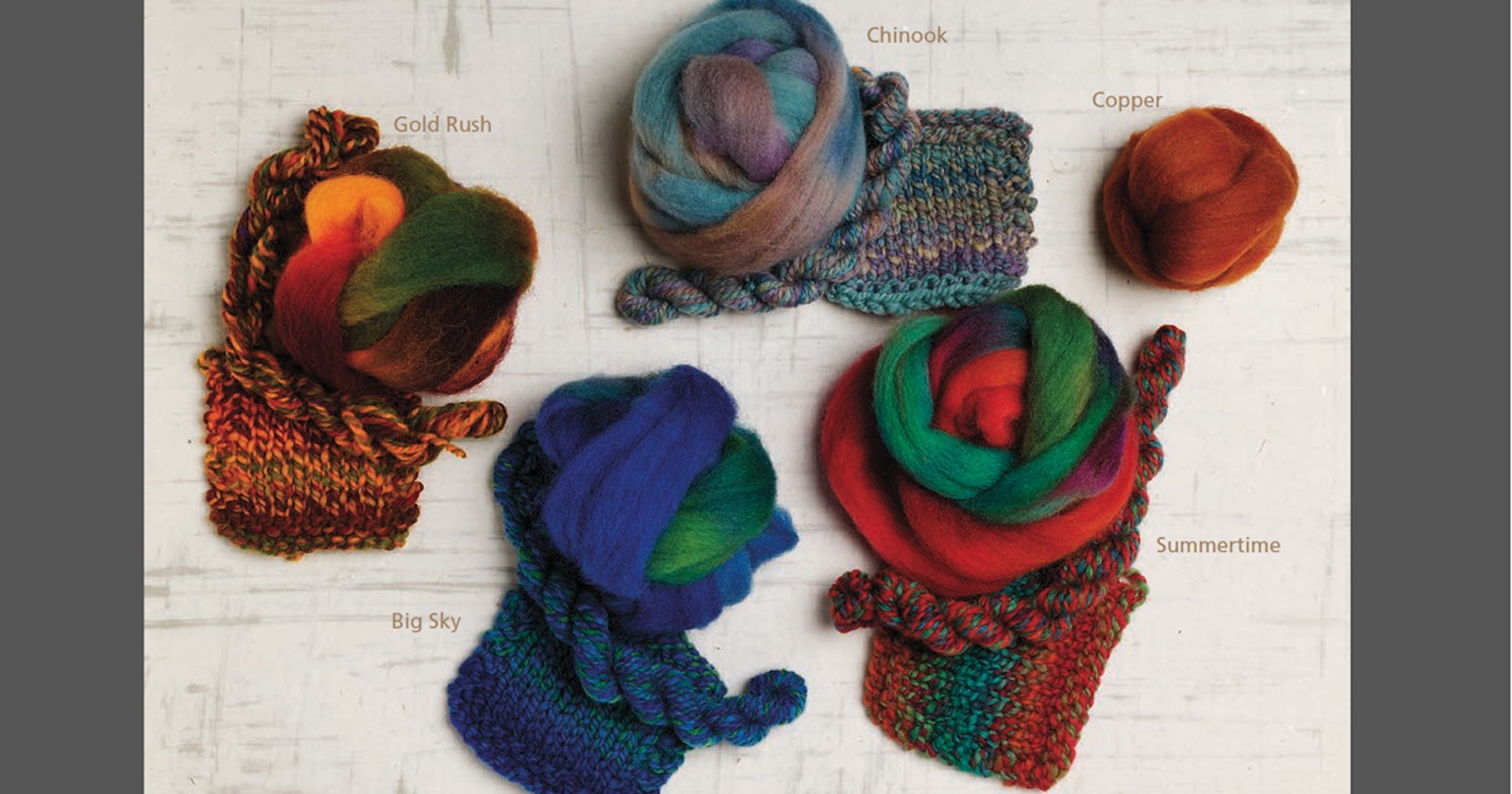Who doesn’t have a pile of beautiful braided tops in their stash? I get entranced by them at fiber shows and online; I fill my arms and my cart with variegated braids of top or roving, rarely more than 1 or 2 the same colorway. I was drowning in single braids, never finding enough of 1 colorway in my stash for a knitting project, until I started mixing them.
Yes, that’s right—I combine different colorways, different dyers, even different fibers until I have the amount I need for a project. It’s a fun way to do some stash-busting and spin absolutely unique yarn.
Step 1: Choose a Pleasing Palette
The first step to combining braids is choosing the braids that go together. This is the step that stops most spinners on the way to their stashes. They get nervous when attempting to choose variegated braids to combine, pulling out color wheels (affiliate link) and fretting over complementary and tertiary matches.
When faced with a pile or wall of variegated braids (affiliate link), here’s how I tackle choosing 2 or 3 colorways to mix: I fall in love with 1 braid, open it, and examine the colors. I go back to my braid stash and pull other braids that have 1 color in common with my first braid. Sometimes I try for an exact match, but most of the time close is good enough. If getting closer is important to you, using the same dyer helps. I repeat the matching process until I have the amount of fiber I need for the project I want to spin for.
A 3-colorway mix.
Step 2: Mix ‘Em Up
My two favorite ways to combine braids are plying and combination drafting.
Plying is the easiest way to combine colorways: spin singles of each colorway and ply them together. It’s that simple. The yarn that comes out is described as marled or barber pole, and the more contrast between the colors that are mixed, the more obvious the barber pole is. The more plies and the more colorways that are used, the more they all blend together.
Another 3-colorway mix.
Combination drafting is holding 2 (or more) colorways and drafting them together to create singles that are marled. Then 2 (or more) marled singles are plied, creating double or triple marl, with lots of short flecks of color.
—Jillian Moreno
Excerpted from “Color Playground,” Spin Off Spring 2015. Featured Image: Jillian chose painted braids in very different color palettes to blend. Posted July 25, 2016. Updated May 2, 2019.



